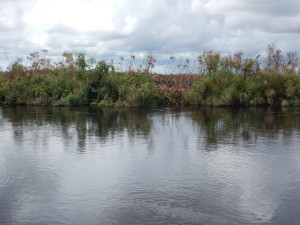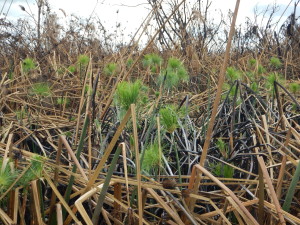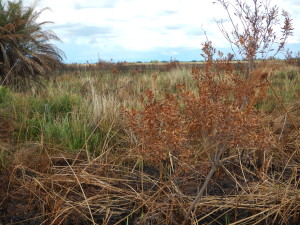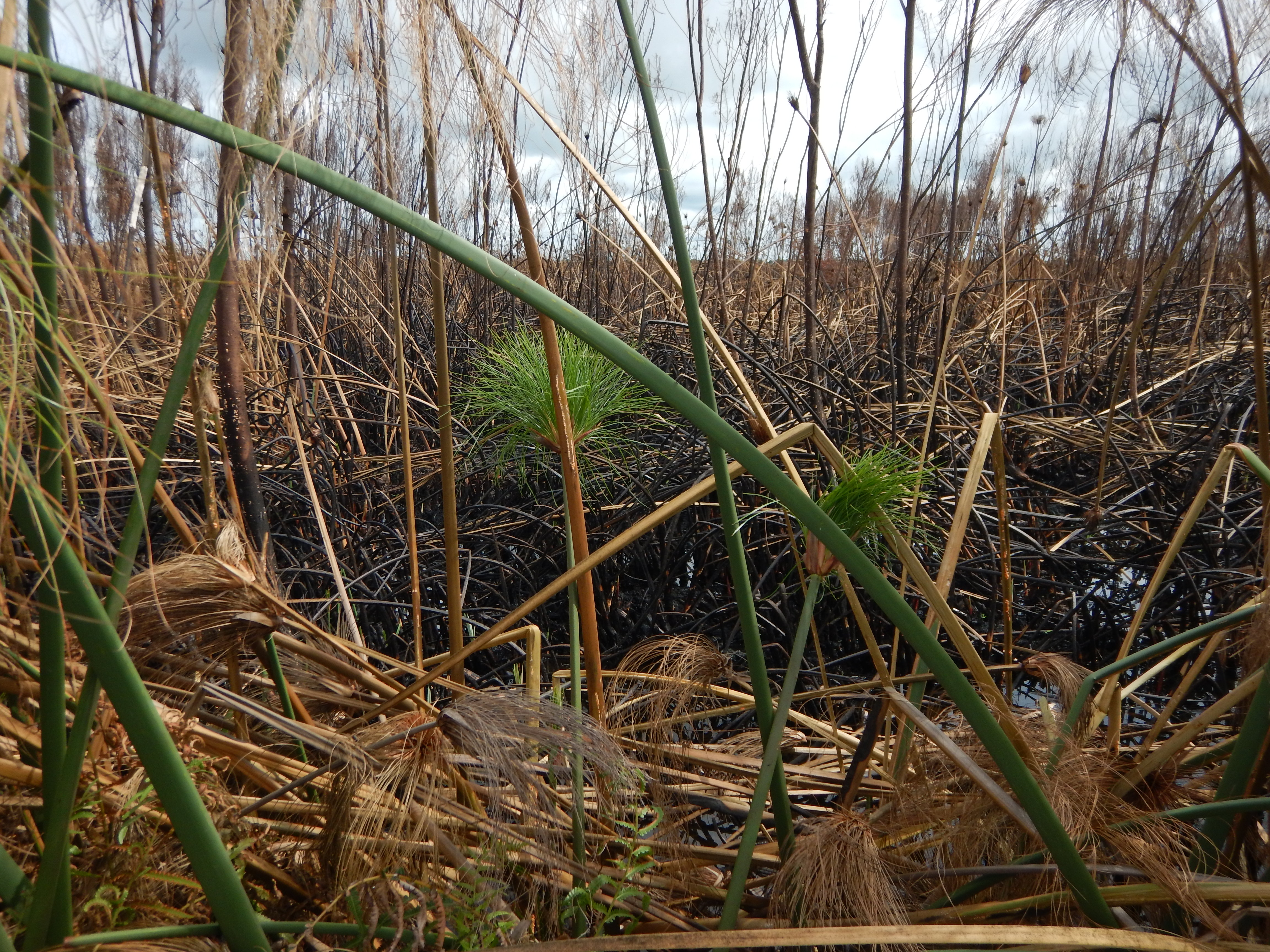When we detected vast areas of low oxygen in the water of the Delta panhandle, we naturally asked locals for possible correlates. One hypothesis, blaming repeated wildfires, in the Delta was suggested by several people.
There are vast areas (10’s of kilometers along the channels) of the panhandle that were burned this year between November and February. At Guma, Guy told me that the Delta burned for days, creating a fiery ring at the edges of the lagoon. Some of the burns were repeated three times, burning back the papyrus as soon as it regrew. Burns are apparently started by people who live in the Delta. It’s not clear if the fires are started accidentally or on purpose. In the dry landscape, a stray cigarette can start a fire that burns for days.




Does burning the landscape cause low oxygen?
Probably not. Here’s why. The low oxygen is caused by microbes, which consume oxygen as they decompose dead plants in the flood plains. The microbes live longer if there is more plant matter. Burning removes plant matter and therefore reduces food for oxygen guzzling microbes. Within our observed range of oxygen values (0.07 – 1.95 mg/L), the slightly higher amounts (above 1.5 mg/L) were measured at the edges of the burned areas. The unburned edges had the lowest oxygen values.

What about reasons for the burn? I was given three by local people and one by a researcher here in Maun.
- Burning reduces habitat for wild animals, making the environment safer for people.
- Burning opens up avenues for mokoros (canoes) to gain access for fishing the channels.
- Burning produces clouds (of smoke), and clouds make rain. The burns always happen at the end of the dry season when the drought is especially bad and the landscape is desperate for rain.
From my perspective, there is no reason to expect clouds of smoke to squeeze rain from a dry sky. You need water to have rain, and smoke cannot make water appear. If there is water, the smoke might make the rain more acidic, but that’s generally not a good thing.
- Burning is a management tool used to promote new growth and biodiversity in the delta. The Botswana government discourages burning, but people living in the Delta do still burn and have done so as far back as living memory goes. Annual burning is part of the ecosystem here.
Burning is a double edged sword in a place like the Okavango. Controlled burns are used the world over to promote biodiversity. According to the Michigan Department of Natural Resources, controlled burns can
- Stimulate germination of some desirable plants.
- Reduce fuels and minimize chances of wildfire.
- Improve wildlife habitat, particularly for birds and grazing animals.
- Control weeds and invasive vegetation
- Improve short term forage (quality and quantity) for grazing
- Improve accessibility
- Reduce plant disease
- Eliminate woody plants and trees to make room for fruit bearing shrubs and grassland forage.
- Recycle nutrients tied up in old plant growth
To achieve the above benefits, fire must be used under very specific conditions, using very specific techniques. For example, burning to favor desired grasses should take place just as they are starting to green up, and the soil surface is damp. Moreover, before burning, nesting times of grassland species should be checked to prevent the destruction of nests and their inhabitants.

The challenge in the Okavango is when to burn. If you burn too early, before the rains, you risk damaging plants too much because they cannot regrow quickly enough in the absence of rain. This is why burning is not encouraged in the Delta.
Repeated burning before rain comes removes vegetation and can actually extend the dry season. Plants participate in the water cycle by moving water from the soil, through their bodies, and out their leaves into the atmosphere – a process called transpiration. In the atmosphere, water gathers into clouds and becomes rain. Plants also protect soil from erosion and desiccation.
The bottom line – a little bit of burning, well timed, is good for managing the grasslands of the Delta. Well timed burns happen right before the rains or after the first dampness hits the ground. They occur when birds do not have chicks in nests. Conversely, a lot of burning with no rain in the forecast can harm the wetlands, kill wildlife, and reduce productivity. So it’s a fine balance that needs thoughtfulness to achieve.
